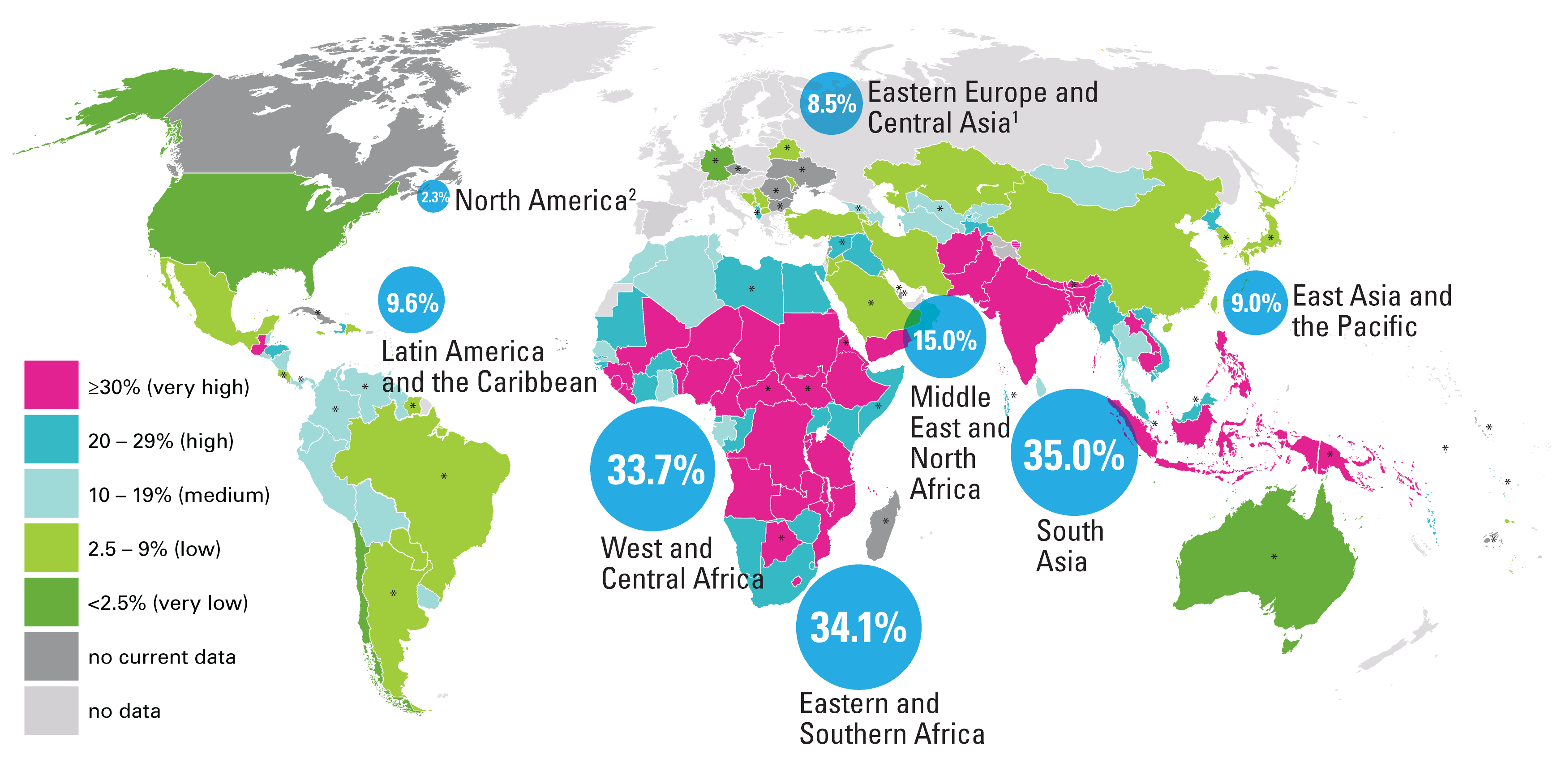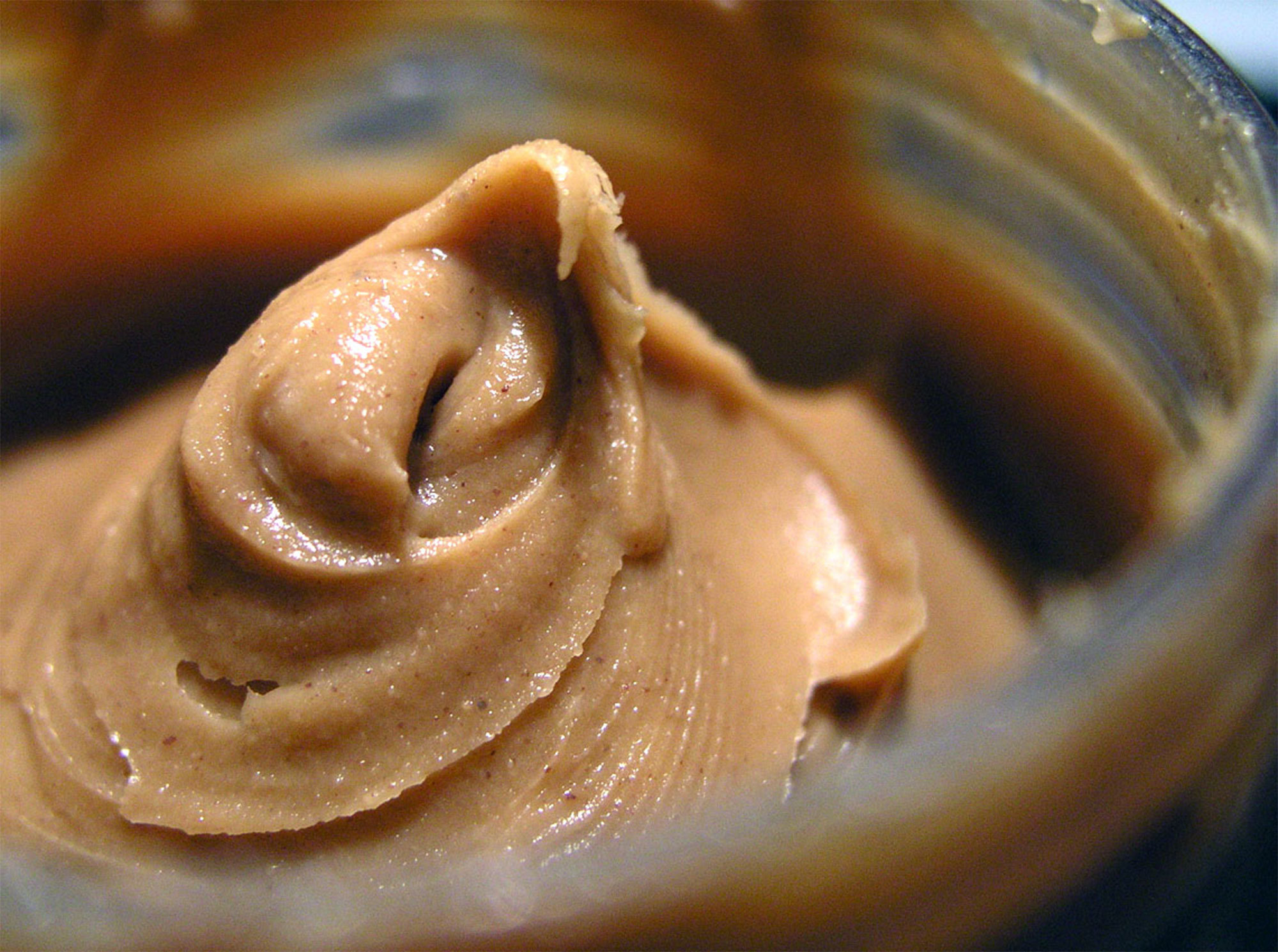
Severe Acute Malnutrition is defined by very low weight for height (below -3 z scores of the median WHO growth standards), by having aa mid-upper arm circumference (MUAC) <115 mm, by visible severe wasting or by the presence of nutritional oedema. Decreasing child mortality and improving maternal health depends heavily on reducing malnutrition which is responsible for major deaths among children under five years of age.
Nearly half of all deaths in children under 5 are attributable to undernutrition, translating into the loss of about 3 million young lives a year. Undernutrition puts children at greater risk of dying from common infections, increases the frequency and severity of such infections, and contributes to delayed recovery. The interaction between undernutrition and infection can create a potentially lethal cycle of worsening illness and deteriorating nutritional status. Poor nutrition in the first 1,000 days of a child's life can also lead to stunted growth, which is associated with impaired cognitive ability and reduced school and work performance.
Measures of child undernutrition are used to track development progress. West and Central Africa have progressed at least since the year 2000 when compared to other regions. Meanwhile, the number of overweight children worldwide - another aspect of malnutrition - is rising. In the post-2015 development era, estimates of child malnutrition will help determine whether the world is on track to achieve the Sustainable Development Goals - particularly, goal 2 to "end hunger, achieve food security and improved nutrition, and promote sustainable agriculture".
Source: (Click Here)
The World Bank estimates that India is one of the highest-ranking countries in the world for the number of children suffering from malnutrition. The prevalence of underweight children in India is among the highest in the world and is nearly double that of Sub Saharan Africa with dire consequences for mobility, mortality, productivity and economic growth.
The 2017 Global Hunger Index (GHI) Report ranked India 100th out of 118 countries with a serious hunger situation. Amongst South Asian nations, it ranks third behind only Afghanistan and Pakistan with a GHI score of 29.0 ("serious situation").
India is one of the fastest growing countries in terms of population and economics, sitting at a population of 1.342 billion and growing at 1.5%–1.7% annually (from 2001–2007). India's Gross Domestic Product growth was 9.0% from 2007 to 2008; since Independence in 1947, its economic status has been classified as a low-income country with a majority of the population at or below the poverty line.
Though most of the population is still living below the National Poverty Line, its economic growth indicates new opportunities and a movement towards an increase in the prevalence of chronic diseases which is observed in at high rates in developed countries such as United States, Canada and Australia. The combination of people living in poverty and the recent economic growth of India has led to the co-emergence of two types of malnutrition: undernutrition and overnutrition.
On the Global Hunger Index India is on place 67 among the 80 nations having the worst hunger situation which is worse than nations such as North Korea or Sudan. 25% of all hungry people worldwide live in India. Since 1990 there have been some improvements for children, but the proportion of hungry in the population has increased. In India 44% of children under the age of 5 are underweight. 72% of infants and 52% of married women have anaemia. Research has conclusively shown that malnutrition during pregnancy causes the child to have increased risk of future diseases, physical retardation, and reduced cognitive abilities.

“Therapeutic Paste”, is a Peanut and Milk powder based formulation is supplemented with micronutrients suitable for treatment of malnutrition and severely acute malnourished child in society having 500 Kcal calories and protein 13 gm per 92 grams of sachet. It contains vegetable oil and milk protein, omega 6 and omega 3 and lipids contents along with micronutrients such as vitamin A vitamin B complex, vitamin C, folic acid, calcium, iron, zinc and others present in the preparation that helps in the growth and to eradicate malnutrition from society.
It is ready to eat preparation, prepared with clean and safe raw material under hygienic conditions and packed in nitrogen flushed pouches that keep the products safe for a longer period.
It is a smooth homogenous preparation available in Nitrogen flashed pouches free from lumps and sandy texture. It has a pleasant sweet clean dairy flavor and roasted peanut taste and free from all types of foreign odors improving the acceptability among the beneficiaries.
The storage, distribution, Use and countability of this packaging are quite easy at distribution point. The effectiveness of Therapeutic Paste is very high because of its qualities of Protein and Fat along with micronutrient available for the body.
Our foremost priority is the removal of poverty, hunger and malnutrition, disease and illiteracy. All social welfare programmes must be implemented efficiently. Agencies involved in the delivery of services should have a strong sense of duty and work in a transparent,corruption-free, time-bound and accountable manner.
:- Pratibha Patil